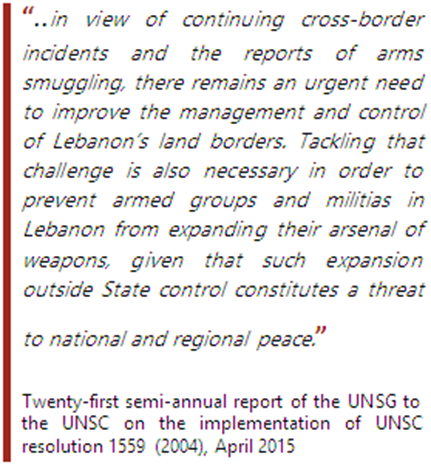Hezbollah: An Iranian Proxy
Hezbollah was founded in the early 1980's in the aftermath of the Islamic Revolution in Iran by a group of about 500 militants from the Iranian Revolutionary Guards. The founders aimed to advance the radical Islamist ideology of the Iranian religious clerics and fight a war against Western influence in Lebanon and the region.

![]()
Even today, when Hezbollah is a political and military organization with tremendous domestic and regional influence, its leaders and commanders answer to the command of the Supreme Leader of Iran, both in the political and religious realms.
Hezbollah relies on Iran for almost all aspects of its existence. Its budget of hundreds of millions of dollars a year, comes almost entirely from Iran. Hezbollah uses this budget (1) to fund cultural and social activities for the wellbeing of the Lebanese Shiite population, through which it lures them to adhere to its ideology; (2) to maintain political activities and alliances; (3) and to execute military operations.
"In Lebanon alone, over 100,000 missiles are ready to be launched [...] these missiles will pierce through space and will strike at the heart of the Zionist regime [...] they are just waiting for the command so that when the trigger is pulled the accursed black dot will be wiped off the map."
Commander of the IRGC, Hossein Salami, July 1, 2016
Hezbollah's reliance on Iran is wide ranging and significant. Aside from weapons provision, the Iranian army and the IRGC Quds Force, formerly led by Qassem Soleimani and currently under the command of Ismail Qaani, oversee Hezbollah's force build-up, strategic and operational architecture of the next war, and preparedness and training of commanders and fighters. In addition, there are Iranians directly responsible for specific units within Hezbollah.
The fighting in Syria serves as a clear example of the enormous power Iran holds over Hezbollah. According to Hanin Ghaddar of the Washington Institute, the Iranian supervision over Hezbollah commanders in Syria increased significantly since Soleimani and IRGC fighters were dispatched to the battlefield.
Arms smuggling from Iran
Hezbollah is almost completely dependent on Iranian arms. The organization maintains a sophisticated smuggling mechanism to ensure the passage of weapons from Iran, through Syria, and finally to their destination in Lebanon. Upon arrival, arms are distributed and stored in Shia dominated areas such as Beirut, the Beqaa Valley and Southern Lebanon.

![]()
Among the advanced weaponry Hezbollah receives from Iran are unmanned aircrafts (drones) with attack and reconnaissance capabilities, anti-ship missiles, long-range surface to surface missiles, and air defense systems.
Multiple reports have warned that Hezbollah, with the help of IRGC, is constructing underground arms manufacturing complexes inside Lebanese territory. This is aimed at avoiding Israeli efforts to intercept arms convoys crossing from Syria. An Iranian official has admitted as such (Sky News, 12 March 2017), and provided further insight into the IRGC's intentions regarding Lebanon, which include constructing underground facilities and training Hezbollah operatives.
The smuggling of Iranian and Syrian weapons is a grave violation of Resolution 1701 and Resolution 2231, which prohibit Iran from supplying, selling, and transferring arms or related materials.


